The Crisis Report - 103
I can tell you what I see when I look at the board. I can tell you what I think it means.

What you do with that information is up to you.
The rest of our lives, aren't going to be what we thought. “Certainty” has gone out the window.
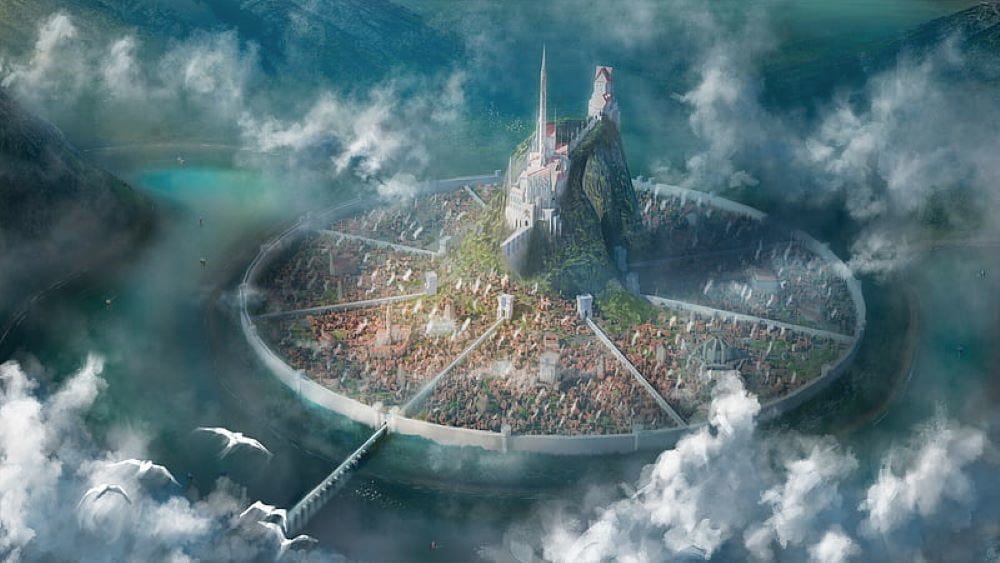
Let's talk about what's going on in our world. Right now the oceans are warming up.
2022 is the Yellow/Orange arrow, it was about +0.1°C warmer than 2021 even though it was a La Nina year. See how 2023 (Red/Orange arrow) starts at about the same temperature as 2022 but in March “jumps up” about +0.25°C and finishes the year about +0.3°C hotter than 2022.
That “jump” in 2023 represents ENERGY equivalent to 471 million Hiroshima bombs being added to the world's oceans. About 3.4 bombs worth for every square mile of open water on the planet.
In 2024, on average, the “global ocean” was about +0.1°C HOTTER than in 2023. 2025 (Grey arrow) looks like it’s going to be even hotter than 2024. That's what Hansen thinks and in his most recent post he laid out why he thinks that.
“2025 might even set a new record despite the present weak La Nina. There are two independent reasons.”
“First, the “new” climate forcing due to reduction of sulfate aerosols over the ocean remains in place, and, second, high climate sensitivity (~4.5°C for doubled CO2) implies that the warming from recently added forcings is still growing significantly.”
“(Secondly) if climate sensitivity is 3°C or less, the rapid, early, response to the ship aerosol forcing introduced in 2020 is complete in 2025, but if climate sensitivity is high, there is still substantial “juice” in the aerosol forcing change, which can thus offset tropical cooling.”
“An acid test for these acidic aerosols will be provided by the 2025 global temperature. January 2025 is the warmest January in the record (Fig. 6) despite the current weak La Nina (which may fade into an ENSO-neutral state in the next few months), but February so far is much cooler than in 2024.”
“We expect the ship aerosol forcing and high climate sensitivity to provide sufficient push to largely offset the effect of the El Nino cycle. Indeed, we expect 2025 to be in competition with 2024 for the warmest year, and we would not be surprised if 2025 is a new record high.”
Here's a clearer way of visualizing what Hansen is saying.
Viewed this way, it is easy to see how 2024 compared to 2023 and why mainstream climate science is still hopeful that temperatures might come down on the back half of this year. Resulting in something like this.

This is the “best case” for us now. Not great, but it implies a Rate of Warming that could be as low as +0.27°C/decade. Which pushes back hitting +2°C until possibly as late as 2045.
Hansen is thinking more in these terms.

In this case 2025 “averages out” above the 2024 yearly average of +1.6°C BUT not by much. Probably just short of +1.7°C over baseline, representing a +0.6°C sustained JUMP in the Global Mean Standard Temperature (GMST) between 2021 and 2025. In line with the forecast he made in his “Faustian Payment Comes Due” paper of August 2021.
In this case, Hansen’s prediction is that the GMST has basically been “reset” from +1.1°C of warming in 2021 up to +1.7°C by the end of 2025. This would then be the baseline for warming over the next 10 years. Which Hansen thinks will be around +0.36°C/decade.
This is the “most likely” scenario to occur. It puts us on track to reach +2.0°C of warming by 2035.
The “worst case” scenario starts off looking pretty much like Hansen’s does for 2025.

Where it diverges is in 2026. I think there is a growing chance of an El Nino pattern forming again in 2026. The oceans are rapidly warming up and conditions will be ripe for an El Nino.
A 2026/2027 El Nino could easily boost the GMST another +0.1°C up to +0.2°C by the end of 2027. Taking the earth to approximately +1.9°C of warming, with a Rate of Warming that has averaged about +0.12°C PER YEAR since since 2021.
The “worst case” scenario puts us on track to reach +2.0°C of warming by 2030.
At this point I think it's still early to rule out the worst case. The amount of heat in the oceans and the speed that it has increased in 2025 are “unprecedented” and disturbing.
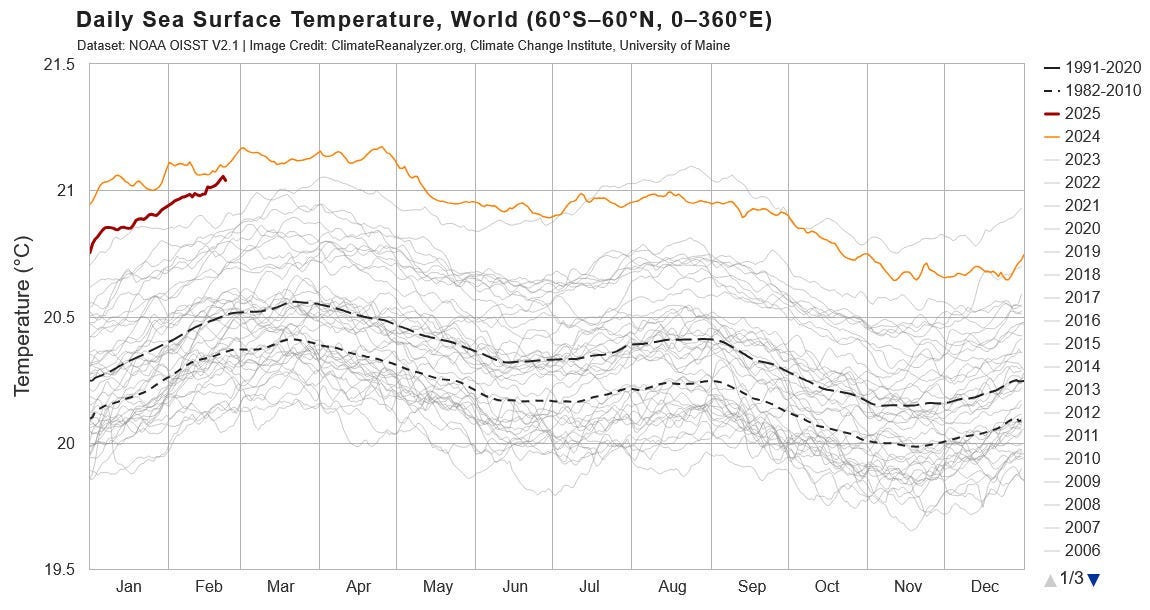
I would estimate that there is about a 35% chance of the worst case scenario happening based on what we know “right now”. I think that in the next 12 to 18 months the situation will become clear.
Here’s why getting to +2°C of warming is so significant.


In this report the “Risk Management” experts in the insurance industry compare reality to the models that mainstream climate science is using to forecast the future effects of climate change. They find that.
“These (mainstream) risk assessments are precisely wrong, rather than being roughly right.”
“High-profile climate change assessments in wide use significantly underestimate risk as they exclude many of the most severe risks we could face.”
“Unfortunately, many high-profile, public climate change risk assessments are significantly underestimating risk because they exclude many of the real-world impacts of climate change, such as the impact of tipping points, extreme events, migration, sea level rise, human health impacts or geopolitical risk.”
“Policymakers are currently unable to hear warnings about risks to ongoing human progress, or unwilling to act upon them with the urgency required.”
Based on the latest research and “observed” conditions the report finds that at +2°C of warming by 2050 there is a “greater than” 25% chance of global depopulation of 2 billion or greater. At +3°C of warming by 2050 the report finds a greater than 50% chance of global depopulation of 4 billion or greater.

SO.
The QUESTION of when +2°C of warming happens becomes much less “abstract” and of MUCH more immediate interest when it’s estimated that it could cause 1 out of 4 people on the planet to starve to death.
If it happens over the next five years. It will mean the collapse of the existing world order. Because it won’t be a simple matter of “one out of four” people across the planet dying all at once.
The “First Wave” of the “Great Dying” is forecast to sweep across the Third World.
Persons with severe food insecurity by region at +2°C of warming relative to 2020 (% population range). Model output; maps generated using ArcGIS Pro 3.3
Just like it did in the late 19th century, during our first period of climate destabilization.
Late Victorian Holocausts: El Niño Famines and the Making of the Third World by Mike Davis (2000)
During the El Niño-Southern Oscillation related famines of 1876–1878, 1896–1897, and 1899–1902. Famines in India, China, Brazil, Ethiopia, Sudan, Korea, Vietnam, the Philippines and New Caledonia resulted in roughly 10% of the world's population starving to death.

As the Global Mean Surface Temperature increases to +2°C, the first 2 billion to die are forecast to be in these areas again. Agriculture in these areas could completely collapse with outputs dropping to 20% or less of current levels. FOR YEARS and perhaps permanently as we immediately begin the transition up to +3°C of warming.
Best case, agricultural outputs in these areas declines ONLY 20–25%. In line with this paper “Report: Warmer planet will trigger increased farm losses” by the Cornell Atkinson Center for Sustainability (January 18, 2024). Which found, based on an analysis of 39 years of data from nearly 7,000 Kansas farms.
For every 1 degree Celsius of warming, yields of major crops like corn, soybeans and wheat fall by 16% to 20%.
Which is in line with this study, “Global impacts of heat and water stress on food production and severe food insecurity” (June 2024) that forecasts -14% global agricultural outputs at +2°C of warming.
Their results indicate that at +2°C of warming, food production worldwide could decline by up to 14%, with an increase of up to 1.36 billion people experiencing severe levels of food insecurity.
Which is in line with my own analysis.
97 - The weirdness of the time we live in. I got reviewed by an AI on Reddit. Someone asked an AI if my articles were believable.
From my article.
As of today there are about 8 billion of us globally.
The top five breadbasket zones produce about 60% of the grain that feeds roughly 2.5 billion people who would otherwise starve.
The next 10 breadbasket zones combined produce about 31% of the remainder.
About 2.5b people are fed by this grain.
Of those people, about 1.5b people are currently in a state of “food insecurity” according to the UN.
About 1b of them live in a state of food insufficiency.
The best study by Cornell found that for every +1°C increase to the GMST cereal grain output declines -16–22%.
The first +1°C has already cost us the 20% productivity gain we should have seen since 2013. In the paper they say “it’s as if we hit the pause button on productivity gains back in 2013.
“For decades, the U.S. agricultural sector has seen 1.5% productivity growth every year, year over year — few countries have seen that kind of sustained growth,” Ortiz-Bobea said. “Globally, we’ve found that climate change has already slowed productivity growth. Global agricultural productivity is 20% lower today than what it could have been without anthropogenic climate change.”
Getting to +2°C between now and 2030–2035 will cut outputs annually by another 20%. Plus it increases the risk of “multifocal output failure” in which multiple breadbasket regions fail at once.
The risk of that increases to about 1 in 6 at +2°C.
Given those inputs, how many fatalities would you predict by 2035?
Because 20% of the global population is about 1.5 Billion people.
Which makes my analysis right in line with the consensus that seems to be emerging now.
_________________________
So far, these forecasts are considered “extreme”, “hyperbolic”, “scare mongering”, clickbait. The “mainstream majority” opinion DOES NOT accept this analysis as valid or reasonable. Even “climate aware” people generally blanch at these forecasts.
It seems unbelievable when you look at what’s in the news and how “normal” life seems (sports, movies, celebrity gossip, etc.). To be told that “one out of four people on earth could be dead in five years, ten at the most”.
How could 25% of the world’s population possibly die so QUICKLY?
Particularly when the Moderates in Climate Science are saying that, “if we get to net-zero by 2045, planetary warming should be no more than +2°C”.

Although this graph is meant to be “reassuring” in that it shows global warming can be “constrained” to around +3°C. It is actually kind of terrifying when you understand several things.
In order to keep global warming below +3°C, net-zero has to be reached “no later” than 2060.
If warming is “unconstrained” and follows the RCP8.5 scenario then we get the BLACK line or +5°C of warming by 2100.
That’s MAINSTREAM CLIMATE SCIENCE saying +5°C of warming by 2100.
Mainstream Climate Science has been saying since the 1980’s that “doubling” the amount of atmospheric CO2 to +560ppm should cause “no more than” a +3°C in the GMST. That +3°C number is THE NUMBER that the 1%’ers, the fossil fuel industry, governments, the IPCC, economists, and planners have used in their models and forecasts for decades.
In this same paper, mainstream climate science NOW SAYS that “the estimate for 2XCO2 has shifted to the ‘high end’ of their models to +4°C”.
UNFORTUNATELY, most of the “decision makers” in the world don’t know that yet. They are still living in a “+3°C by 2100” mindset. So far, most of the public has the same mindset.
Almost no one understands that a CRISIS is upon us and is unfolding now in real-time. Few BELIEVE yet that “climate change” could cause billions to die and civilization to collapse. Particularly not in “just decades”.
Particularly not to them.
Especially if they are white.

The indications are that “food supply” is about to significantly SHRINK. You can argue about “how fast” and at “what level of warming” it will happen. But, the emerging consensus seems to be that it will happen as we climb to +2.0°C of planetary warming and then INTENSIFY as warming to +3°C occurs.

Around 100 million starved in the late 19th century from the first surge of global warming and climate disruptions.

Things “seem” stable and still “normal” on the surface. “Things” can change almost overnight if the food supply crashes.
This is my analysis.
This is what I see.
This is my “Crisis Report”.
rc 02/26/2025
ADDENDUM:
There is a “band of fire” encircling our planet.
The Ocean Heat Content reflects that.
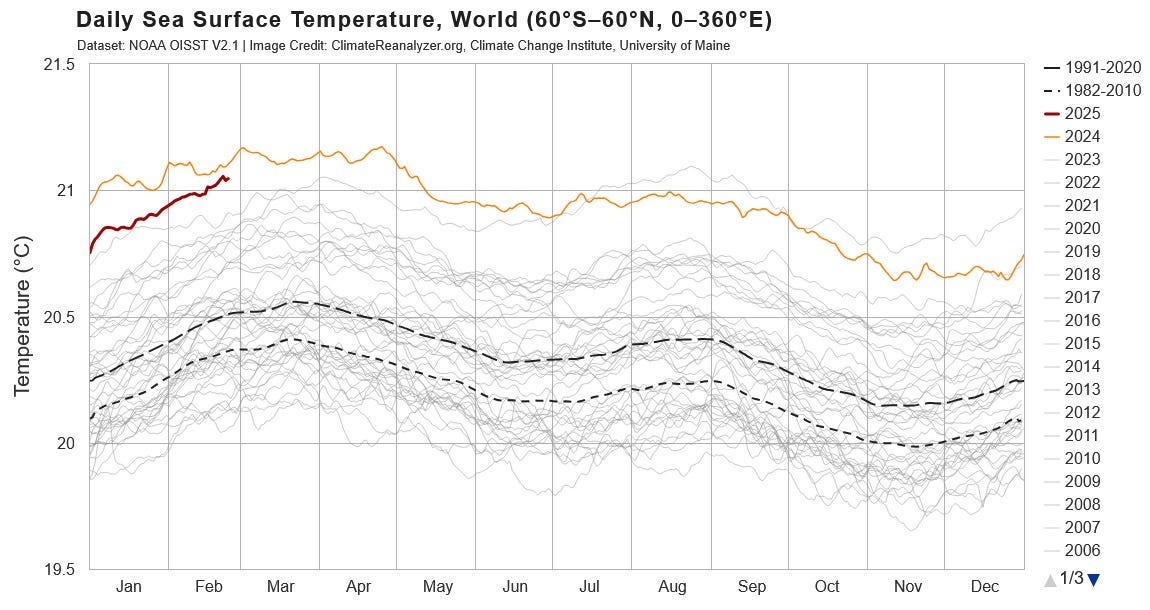
That HEAT, is going to change our planet and the rest of your life.
What you do with that information is up to you.
The rest of our lives, aren’t going to be what we thought. “Certainty” has gone out the window.






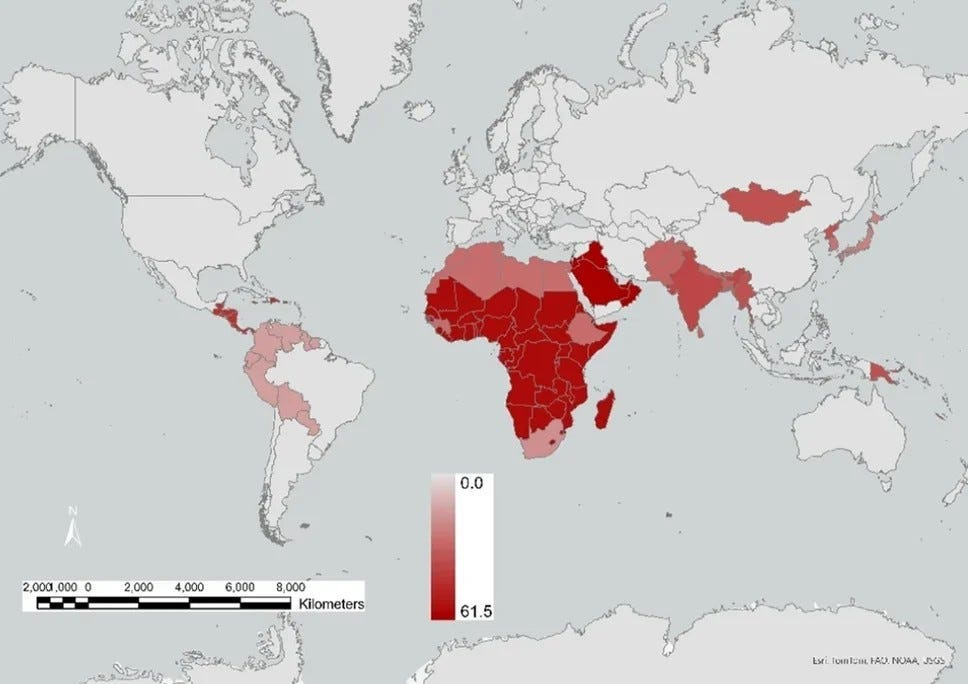
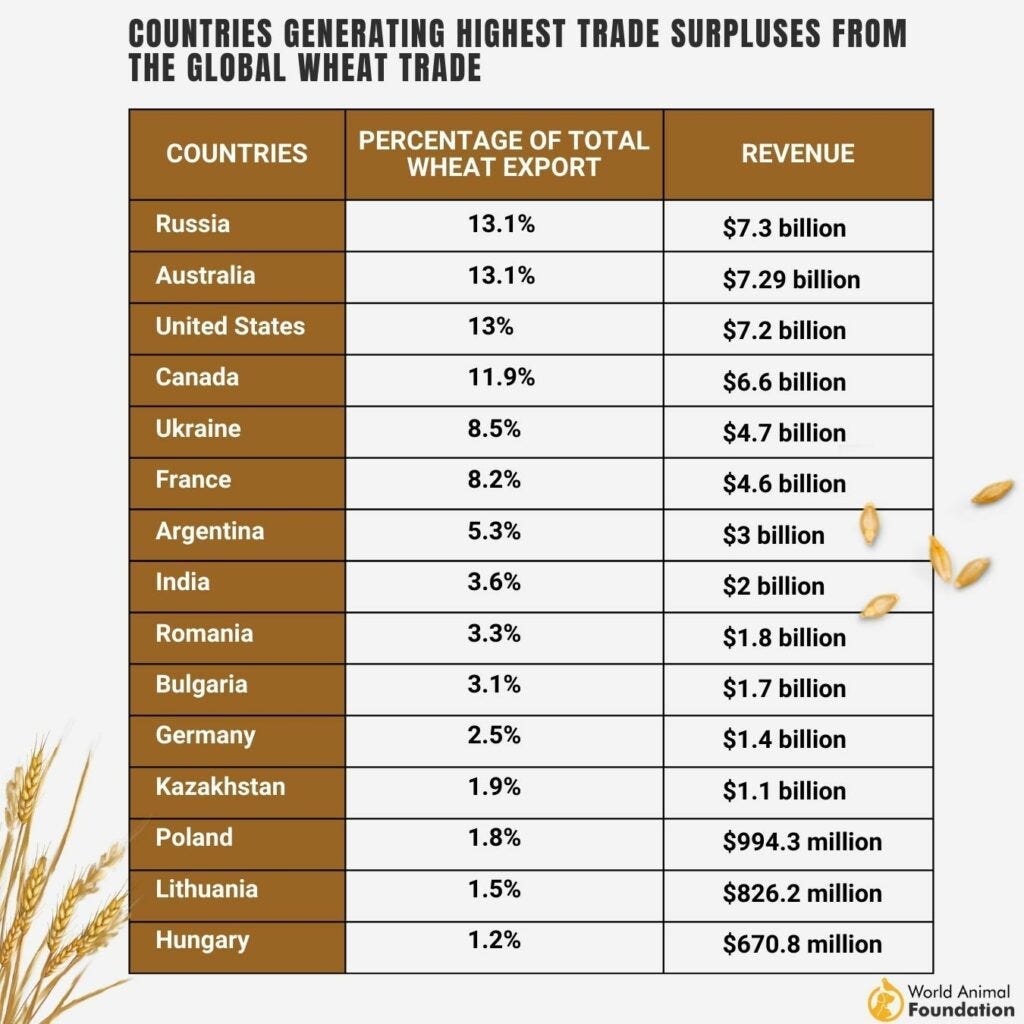


the 2C switch will be flung in the near future. when is "bad" bad enough? I suspect walls will be built to stave the tide of bodies. will we see thousands of miles of barbed wire patrolled by drones with infared targeting systems? the entire US population is "only" 340,000,000. where will these people go? It will be "interesting" to see if the first 500,000,000 people quietly lay down and die without protest. In the game of climate induced migration and subsequent refugees, this is going to be an absoluetly brutal time for everyone (earth) I feel somewhat lucky to be American. that to be an engineer, to have a currently stable job, a house, a car, etc, etc, gives me the chance to sit back and collect the facts. I am extremely privilaged on a global scale. the abismal terror I feel knowing this GIANT dirty secret before almost everyone else is exhausting. the "polycrisis" is here. the starving times are coming. violence is coming.
You are of course spot on. Your readers should be assured that you are not doom-mongering, the situation is very bad and getting worse daily. Hotter than expected, sooner than expected- the world we knew is going away and won't return. Instability is with us and with it will come resource wars, mass migrations, great loss of biodiversity, arable lands, and rising oceans. Even if we do everything right with massive geo- engineering and achieving net zero with total conversion to solar and wind power, the heat rise is baked in and it will take hundreds of years for it to decline. Whether our global civilization can survive is anybody's guess.